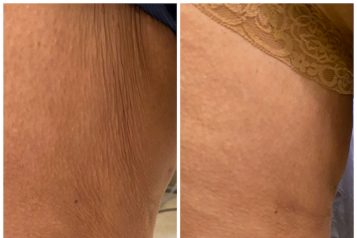Dr. John Mesa is a Harvard-trained, triple fellowship-trained plastic surgeon who is known for his extraordinary surgical techniques and stunning results. His specialty is cosmetic plastic surgery for the face and neck. He is known for delivering premier, individualized care and for achieving consistently beautiful, natural-looking results. Dr. Mesa has had extensive fellowship training at top educational institutions, including Harvard. His strong credentials have given him a unique set of skills for cosmetic plastic surgery. Haute Beauty expert Dr. John Mesa discusses how a neck lift corrects loose skin resulting in a smoother, youthful appearance.
 Photo Credit: ShutterstockWhat is Neck Lift?
Photo Credit: ShutterstockWhat is Neck Lift?
A neck lift is a cosmetic plastic surgery procedure that rejuvenates the neck. It corrects the loose skin under the chin, the presence of vertical bands called platysma bands or "turkey neck", and any double chin. A neck lift allows the aging-looking neck to achieve a smoother, more youthful facial appearance.
What are the benefits of a Neck Lift?
A neck lift sets the clock back to the neck appearance, thus providing a youthful-looking neck. Compared with other treatments, a neck lift is the only procedure that can address all the components (layers) of the neck for rejuvenation. Therefore, a neck lift is considered the gold standard of neck rejuvenation.
Do you always have to go to sleep for a Neck Lift?
No, you don't have to go to sleep (undergo general anesthesia or twilight anesthesia) to undergo a neck lift. Thanks to the advances in local anesthesia techniques, now anyone can experience a neck lift wide awake under local anesthesia. It is beneficial for patients who want to eliminate the risks associated with general anesthesia (or IV sedation) and patients with contraindications for general anesthesia.
 Photo Credit: ShutterstockIs it possible to undergo a Neck Lift under local anesthesia?
Photo Credit: ShutterstockIs it possible to undergo a Neck Lift under local anesthesia?
Yes, it is possible to undergo a neck lift under local anesthesia while completely awake without any pain. It is a typical misconception that to undergo "major" cosmetic procedures such as a neck lift, you must go to sleep to avoid the pain of the surgery. With the advancement in local anesthesia techniques, it is possible to undergo a neck lift under local anesthesia without discomfort while awake. This neck lift modality completely avoids the need and the risks for general anesthesia or IV sedation (twilight anesthesia). In my practice, some patients who have experienced a neck lift under general anesthesia 15-20 years ago (elsewhere) and recently underwent a second neck lift under local anesthesia with me were surprised how painless the procedure was and how much shorter it was compared to the one involving general anesthesia.
Is it the same to undergo a neck lift under 'local anesthesia and Twilight Anesthesia' as with local anesthesia alone?
No, local anesthesia with twilight anesthesia is not the same as (pure) local anesthesia. Twilight anesthesia is a "marketing" name to describe IV sedation. IV sedation is technically general anesthesia without having a breathing tube (ventilator) connected to the patient. When somebody is under twilight anesthesia (with or without local anesthesia), they are unconscious but can breathe. An anesthesiologist or nurse anesthetist must be present to administer the twilight anesthesia (sedation) through the vein, monitor the vital signs (especially the breathing), and be ready to insert a breathing tube in the case the patient stops breathing during the procedure. When somebody is under local anesthesia alone, they are conscious, and their respirations are not impaired since they are entirely awake.
What is the recovery like?
The patient typically wears a large dressing around their head and neck for the first 24 hours post-procedure right after surgery. Then the bandage is removed, and a compression garment is placed for about a week. Patients may present some swelling and bruising that usually subsides within a week. Stitches might be present either behind the ears, under the chin, or both. Stitches generally get removed within a week. Patients may feel tightness in their neck and some mild discomfort. It is easily remedied with pain medications. Patients are instructed to refrain from heavy exercise during their initial recovery and are generally ready to appear in public after the second-week post-procedure. All the final results are evident three months post-procedure.





















